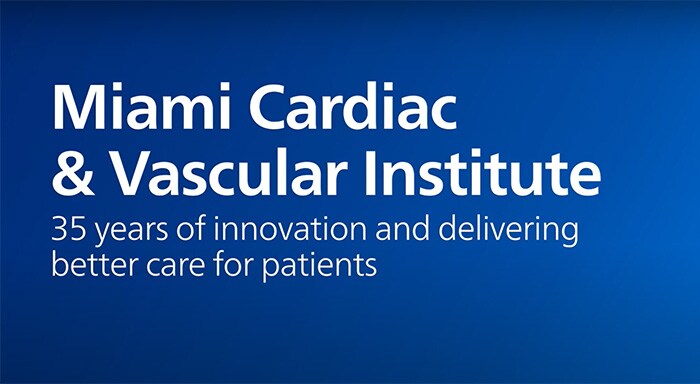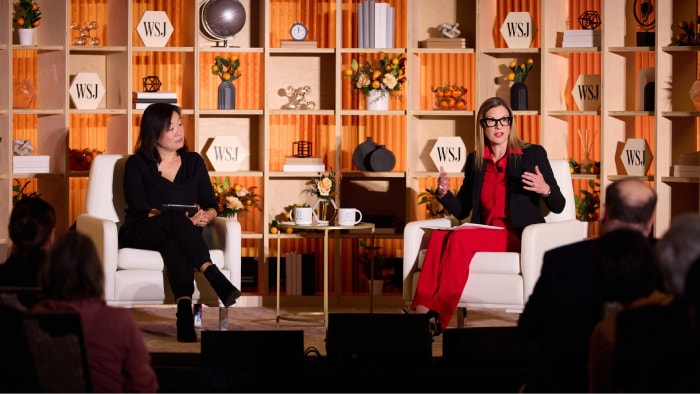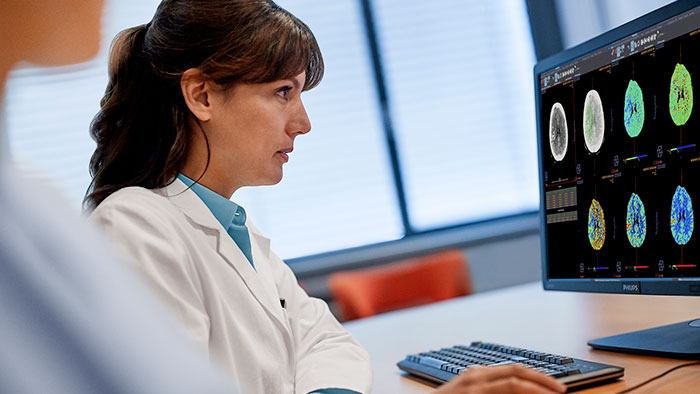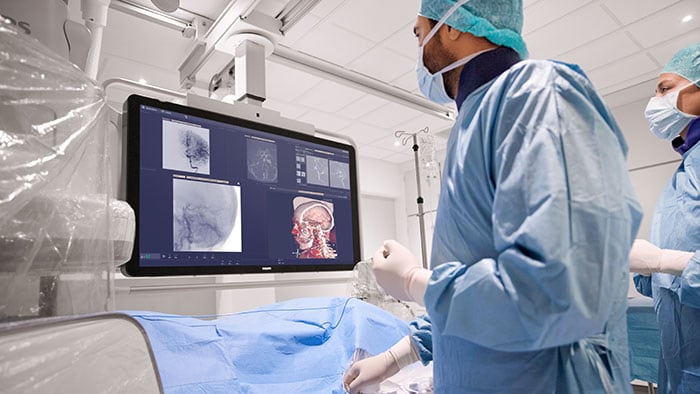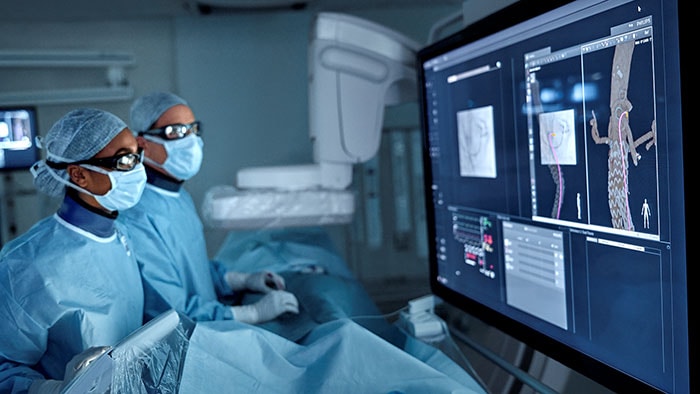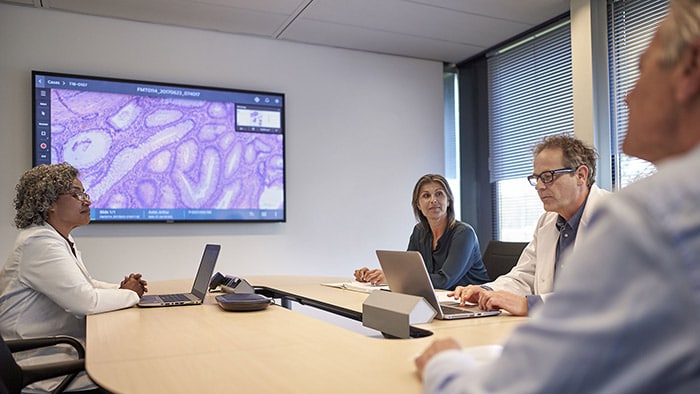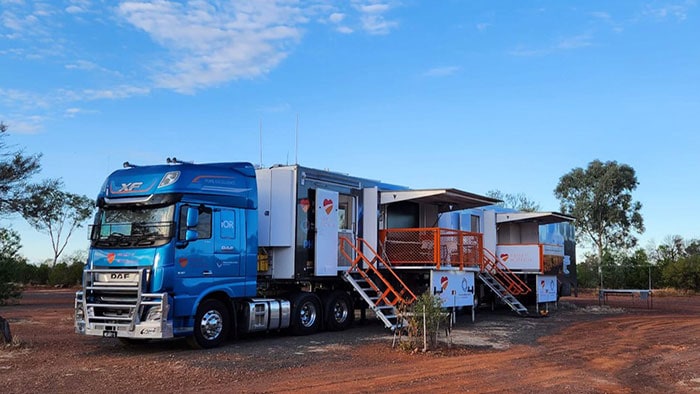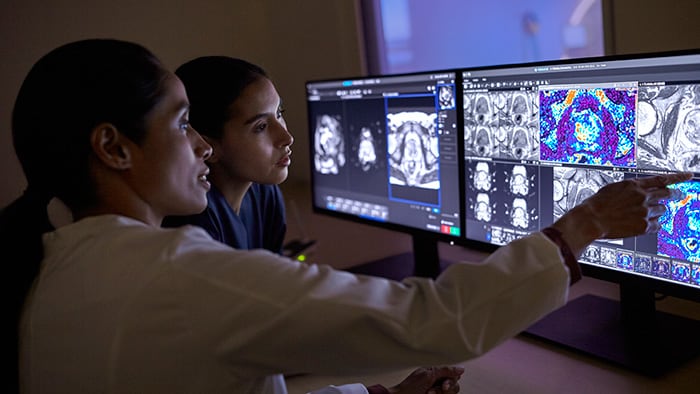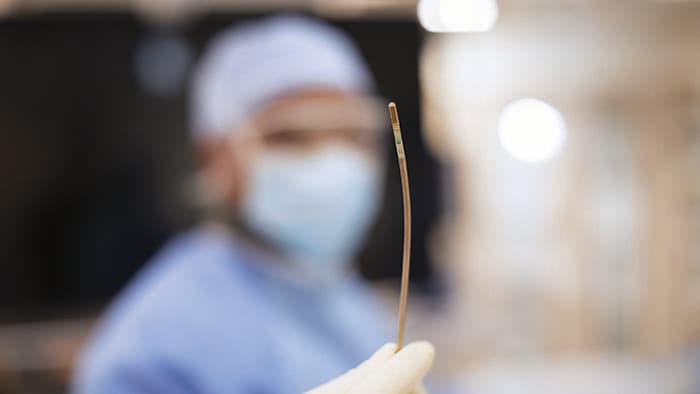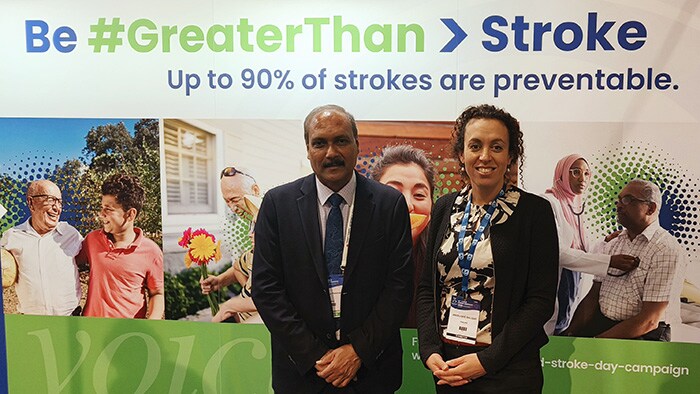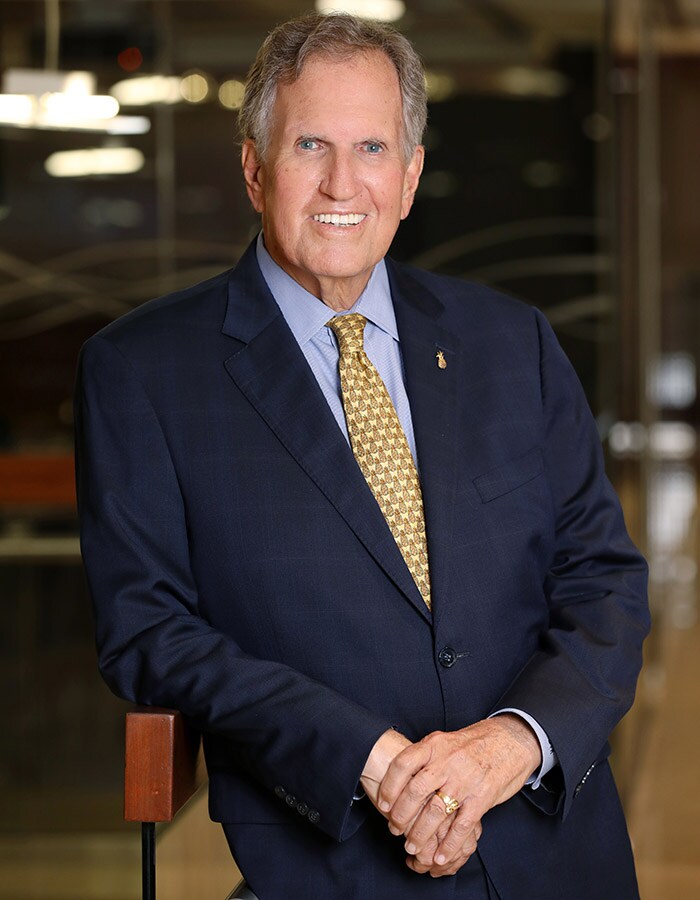
This month, the Miami Cardiac & Vascular Institute (MCVI) is celebrating 35 years of delivering better care for patients. For more than thirty of those years it has partnered with Philips to develop breakthrough innovations in image-guided therapy, 3D abdominal imaging, advanced endovascular treatment, and more. We asked Barry T. Katzen M.D., Founder and Chief Medical Executive of MCVI, and Bert van Meurs, Chief Business Leader Image Guided Therapy (IGT) at Philips, what the partnership means to the two organizations and how it has helped advance image-guided minimally-invasive surgery over the years.
Dr Katzen, what prompted you to establish MCVI, and what was your vision?
Dr Katzen: Even before establishing MCVI, it became apparent to me that the care of vascular disease was very fragmented. You had cardiologists taking care of the heart, vascular surgeons taking care of vascular disease, and different physicians taking care of hypertension, stroke prevention, renovascular hypertension, and kidney failure. To me, it seemed this was really all one disease - atherosclerosis - but the medical infrastructure was fragmented and separated. You had physicians in different disciplines not communicating with each other. So number one, I began to develop the idea of more patient-centric care, because it looked like a much better way of treating atherosclerosis. And number two, to develop a collaborative model of care where all the different disciplines were not only talking to each other but working together towards the patient's best interest. I put those thoughts down on paper and sent it to the leadership of Baptist Health in South Florida. They liked the idea, and that was the beginnings of MCVI.
If you compare MCVI in the early days to where you are now, what would you say are the big differences?
Dr Katzen: The environment in which MCVI developed was different than today. The payment system in the U.S. was a fee-for-service system and much less government-dependent than it is today. In many ways it was easier to get things done, because most of the physicians I worked with were most interested in the patients’ outcomes, so you could focus decisions around the patient. The second thing was the technology around minimally-invasive surgery was crude compared to today, and imaging technology was still directed towards diagnosis - how small a vessel you could see, and what the resolution was. While most companies would give you a technology presentation and say ‘this is what you can do with it’, the difference with Philips was that it was asking from the very beginning ‘what do you need?’, ‘what are you trying to do?’, and ‘what kind of technology do you need to do it?’. That still distinguishes Philips in terms of how it interacts with its customers and users.
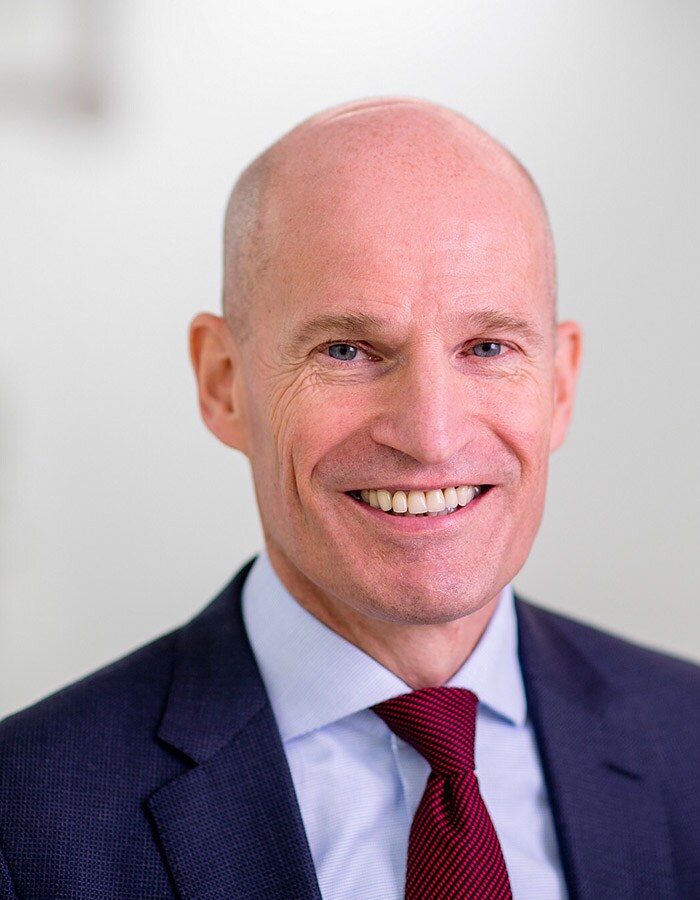
Bert van Meurs: I very much recognize what Dr Katzen explained about the change over the last 35 years, because Philips was also there from the beginning. The world has changed and Philips has also changed - from a large conglomerate to a dedicated health technology company. And as Dr Katzen said, it all starts with the patient. By putting the patient at the center of everything we do, we look for solutions that help customers like MCVI to treat patients better. In image-guided therapy, for example, we’ve gone from being an X-ray provider to a provider of complete and integrated solutions that now include intra-operative ultrasound and interventional devices. It’s because we share the same vision of helping patients better that our partnership with MCVI works so well.
Innovation has always been key at MCVI, and Philips and MCVI have been partners from the beginning. Why is the partnership important, and what is the value for MCVI?
Dr Katzen: Our long-standing partnership with Philips means a lot to MCVI, and in many ways represents the history of image-guided therapy over the past 35 years, with many key developments in image-guided therapy occurring at MCVI. Our relationship has been based on transparency, and the ability to communicate freely with each other and deal with the highs and lows of any relationship, but always based on collaboration. I think one of the unique things about Philips that has remained constant over the past decades is that Philips has always listened to us, to the customer and the user, and used that as the source of where the development pipeline should go. From MCVI’s perspective, the relationship has kept us at the leading edge and continues to be highly productive.
Philips has always listened to us, to the customer and the user, and used that as the source of where the development pipeline should go. From MCVI’s perspective, the relationship has kept us at the leading edge and continues to be highly productive.
Barry T. Katzen M.D.
Founder and Chief Medical Executive of MCVI
How have minimally-invasive treatments for interventional procedures in cardiology, vascular, neuro, or even oncology, changed over the years and how has this partnership between the two organizations contributed to that change?
Dr Katzen: Image-guided therapy began in interventional radiology in an attempt to convert what we were doing with imaging into therapeutic procedures. I was one of those who said ‘the answer is not about diagnosis anymore, it’s about treatment’. Using the catheter as a surgical instrument was a driving principle. So early in my professional life I began to think about how we could make treatment better, less invasive for the patient. It was one of the pillars of MCVI when we started. We were no longer interested, for example, in how you diagnose carcinoma of the pancreas with fractional-millimeter imaging resolution, we were interested in how well you could see a catheter and get it from point A to point B to treat something. I think Philips also sensed this movement early on and started developing the tools. The aim of developing their Azurion with FlexArm platform, for example, was to create an optimal environment in which image-guided therapy could be performed. The recent direction Philips has chosen is unique in the industry, but in reality, they have been at the forefront of change throughout the last 35+ plus years.
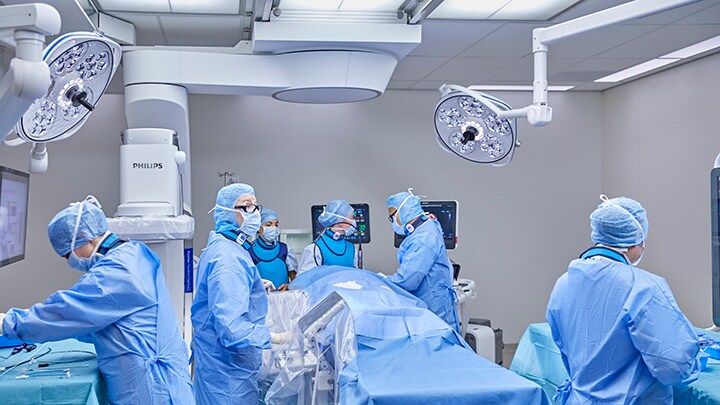
Physicians at MCVI treating a patient using Philips Image-Guided Therapy System – Azurion with Flexarm
Bert van Meurs: Innovation is not only about R&D. It starts, as Dr Katzen says, with truly understanding your customer’s needs. If you have a relationship based on trust, you can really work closely together to co-create completely new solutions like our next-generation image-guided therapy platform Azurion. MCVI has the clinical leadership and vision that helps us better understand the needs of new procedures, and we have the technology leadership needed to co-create new solutions. Minimally-invasive therapy offers new opportunities for patients to be treated that could not be treated before or to make treatment more effective. It started in radiology, cardiology, and the treatment of stroke, but today we also have a close collaboration with MCVI on new tumor ablation procedures that offer completely new opportunities for cancer patients. But it starts with the people - the leadership of Dr Katzen, Carol Melvin, the institute’s Chief Operating Officer, and the whole team at MCVI - who have such a strong, trusted relationship with our team.
Dr Katzen: When we started, if you had an acute myocardial infarction, you were in the hospital for a week or 10 days and then you went home to rest for three or four weeks. Now, when you have an acute heart attack, you're back at work the next day. But whether it's cancer, inflammatory disease, blocked arteries or the treatment of stroke, the things we can do today are miracles compared to where we were before. It took a long time, because there was also a lot of failure getting to the point where we are now. But it’s how the partners deal with those failures that’s important. I think Philips as a company, in terms of its integrity and understanding, has done an incredible job with us at MCVI on that front.
When we started, if you had an acute myocardial infarction, you were in the hospital for a week or 10 days and then you went home to rest for three or four weeks. Now, when you have an acute heart attack, you're back at work the next day.
Barry T. Katzen M.D.
Founder and Chief Medical Executive of MCVI
If we look at healthcare today, what are the main challenges that you as a physician and your hospital face - clinical but also maybe technological?
Dr Katzen: The regulatory environment has definitely changed. In the early years, physicians could to some extent deploy trial and error when developing procedures. Now it's all about evidence-based data. You have to have evidence proving that what you're doing is better and there is value to the patient. That's all very good, but it adds a significant amount of cost and time. I think we can do a much better job on that, but among the barriers to using new solutions in the clinical environment cost issues are becoming a significant factor. We are wringing cost out by being more efficient, but I think we've reached the limits of what value that can bring right now. It’s true that minimally-invasive therapy can now be done in less expensive, more convenient out-of-hospital settings as a way of reducing costs, but that environment itself doesn't necessarily support innovation because it's also very cost sensitive. The second big challenge we face is the environment that people now work in. The pandemic was very disruptive to the healthcare environment and the people that work in it. It has made the ability to recruit people into healthcare delivery, and stay in healthcare delivery, more challenging.
Bert van Meurs, how can Philips as a partner help with lowering the cost of healthcare and improving the staff experience so that people want to work in, and stay in, healthcare?
Bert van Meurs: I think Dr Katzen explained really well how the needs have changed, and at Philips we also try to articulate that in our strategy. Whereas in the past we focused a lot on image quality and clinical outcomes, today we focus on the Quadruple Aim which is still about outcomes but also about lower costs and the staff and patient experience. So it’s not only about the imaging modality itself, it's about the whole workflow of the procedure, and beyond that, how patients moving from diagnosis to treatment and back home can be done in more convenient and cost-effective settings. Data will play an important role there, which means Philips is rapidly transforming into an informatics player, where we use data, analyze data, and use AI algorithms to help optimize workflows, focusing on the entire care path rather than a single episode of treatment.
Looking ahead 20, maybe even to 50 years from now, what do you think it will be like for a patient treated at MCVI?
Dr Katzen: I think there will be a number of distinct movements over the next 20 years. One is the patient as the data source, for example, gathering real-time data using sensor technology and being able to manage that data in a remote way. From an MCVI perspective, it means we are going to be much more engaged in the ambulatory space, not just from a procedure point of view but from a continuity of care point of view. The patients themselves will be using that data, meaning they are going to become much more integrated and involved in their care. People will be living longer and therefore getting diseases they previously wouldn't have gotten, because previously they would have passed away earlier. So even though a significant amount of care is shifting to the ambulatory space, hospitals will continue to become places where more patients are treated, and sicker patients are treated. The level of acuity is going up.
Bert, would you like to respond to that and offer some final words?
Bert van Meurs: It's very difficult to imagine what it will be like 35 years from now. I'm very confident that we will still be very strong partners, and that over the next 35 years we'll be able to develop even more and better care solutions. I believe minimally-invasive surgery will be even more automated, more in ambulatory settings, and more efficient, but still be there because it offers such huge benefits to patients and the whole healthcare system. I also believe that 35 years from now we will be able to do procedures without using X-rays, for example, using smarter navigation technologies, intelligent devices, and robotics. It will allow us to go faster to a lesion and deliver more effective treatment, as well as providing better feedback during procedures so that the patient can go home earlier, stay at home, and be monitored remotely, making the whole process even more patient friendly. Another thing I am confident about is continuation of this fantastic partnership and collaboration with MCVI, which we are extremely grateful for. I am truly pleased to congratulate Dr Katzen and MCVI on their 35th anniversary and look forward to the next 35 years of collaboration.
Share on social media
Topics
Contact
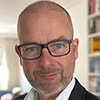
Joost Maltha
Philips Global Press Office Tel: +31 6 10 55 8116
You are about to visit a Philips global content page
Continue